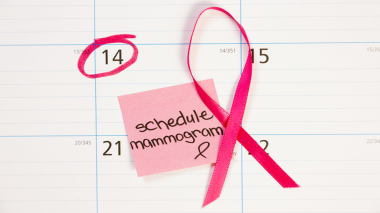Rising summer temperatures are something many people look forward to each year, but the warmer months bring real safety concerns for companies whose workers must work outdoors.
Per the Centers for Disease Control and Prevention (CDC), more than 700 heat-related deaths occur annually. Additionally, some 67,000-plus emergency department visits are made and more than 9,000 people are hospitalized annually due to heat.
It is essential to identify heat-related illnesses and understand how to prevent them and what to do if one occurs.
The Five Types Of Heat Illness
There are five different types of illness a person may experience due to heat. While a heat rash or cramps are not severe or life-threatening, both can quickly develop into dangerous and deadly conditions.
- Heat rash – This occurs when the sweat glands become clogged.
- Heat cramps – This condition happens when a person loses electrolytes through heavy sweating, causing painful muscle cramps.
- Heat syncope – A sudden loss of blood flow to the brain due to the dilation of the blood vessels. The dilation of blood vessels is a cooling mechanism that results in a drop in blood pressure that can lead to fainting. Dehydration can worsen this condition.
- Heat exhaustion – A more serious heat-related illness that stems from decreased salt and water in the bloodstream due to heavy sweating. Symptoms include heavy sweating; weakness or tiredness; cool, pale, clammy skin; fast, weak pulse; muscle cramps; dizziness; nausea or vomiting; headache; fainting,
- Heatstroke – This is a true medical emergency in which the body becomes overheated due to physical exertion and prolonged exposure to heat. The person may display mental confusion; red, dry skin; stoppage of sweating; decreased consciousness.
The treatment for heat rash and cramps is to move the person to a cooler location and hydrate. If someone is experiencing heat syncope or heat exhaustion, they should lie down in a cool place, remove any excess clothing, hydrate (as long as they’re not feeling sick to their stomach) and call for help.
Anyone experiencing heatstroke is having a medical emergency, and 911 should be called immediately. In addition to removing them from the hot environment and rehydrating them if possible, the person’s clothes should be removed down to their undergarments, and they should be cooled by any means necessary, such as packing ice in their armpits and groin.
Preventing Heat Illnesses
Anyone can experience a heat-related health concern, but some are at a higher risk than others. Those at-risk include babies and young children, people 65 and older, individuals who are overweight, anyone who overexerts themselves during exercise or work, and people with certain health conditions such as heart disease or high blood pressure.
The signs of heat illness are:
- Headache or nausea
- Weakness or dizziness
- Heavy sweating or hot, dry skin
- Elevated body temperature
- Thirst
- Decreased urine output
Ways to reduce or prevent the risk of heat illnesses include:
- Wearing light-colored, loose-fitting, breathable clothing.
- Scheduling heavy work during the coolest parts of the day.
- Taking more breaks in a cool or shaded area when doing heavier work in high heat and humidity.
- Drinking water frequently.
In most cases, heat illness should be reduced by engineering controls like, air conditioning, or work practice modifications such as those listed above. Keep in mind some protective clothing or personal protective equipment may increase the risk of heat-related illnesses, so it is also important to consider when and where employees are using that equipment. Most importantly, watching out for each other and your employees is vital.
Workplace problems connected to heat can be prevented. The majority of fatalities from heat illnesses happen during an employee’s first week on the job. New or returning workers must ease into outdoor activities in the summer months to help their bodies adjust to higher temperatures.
An on-site nurse or partnering with your local occupational medicine clinic can help businesses better manage heat-related issues with employees, including providing education on how to handle the heat safely.
To learn more about Occupational Medicine from Atrium Health in your area, check out our local websites:



